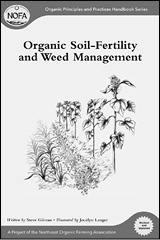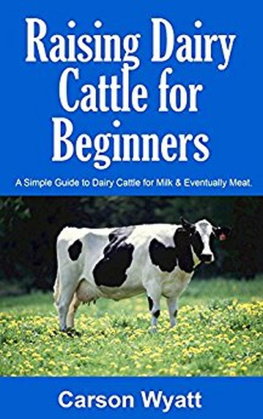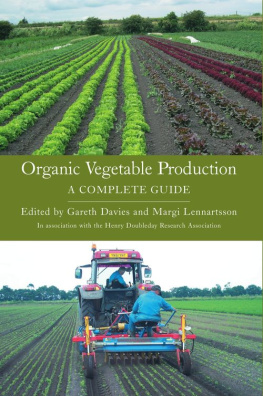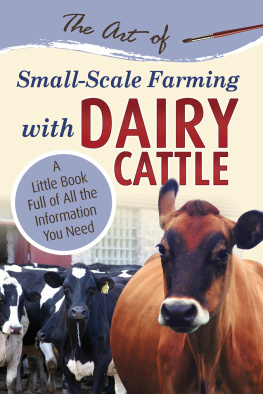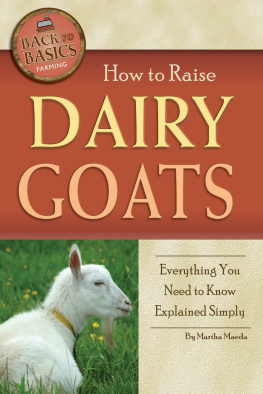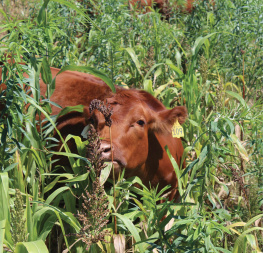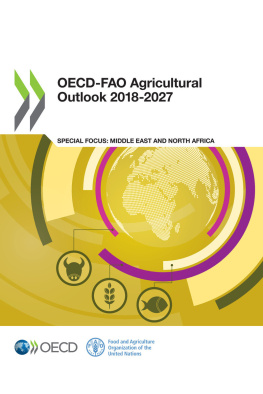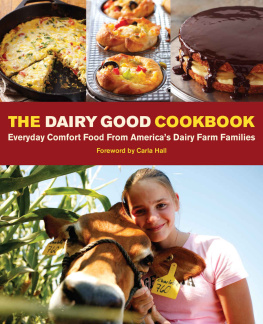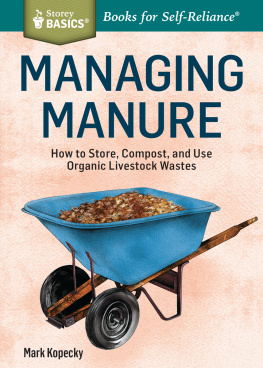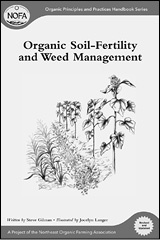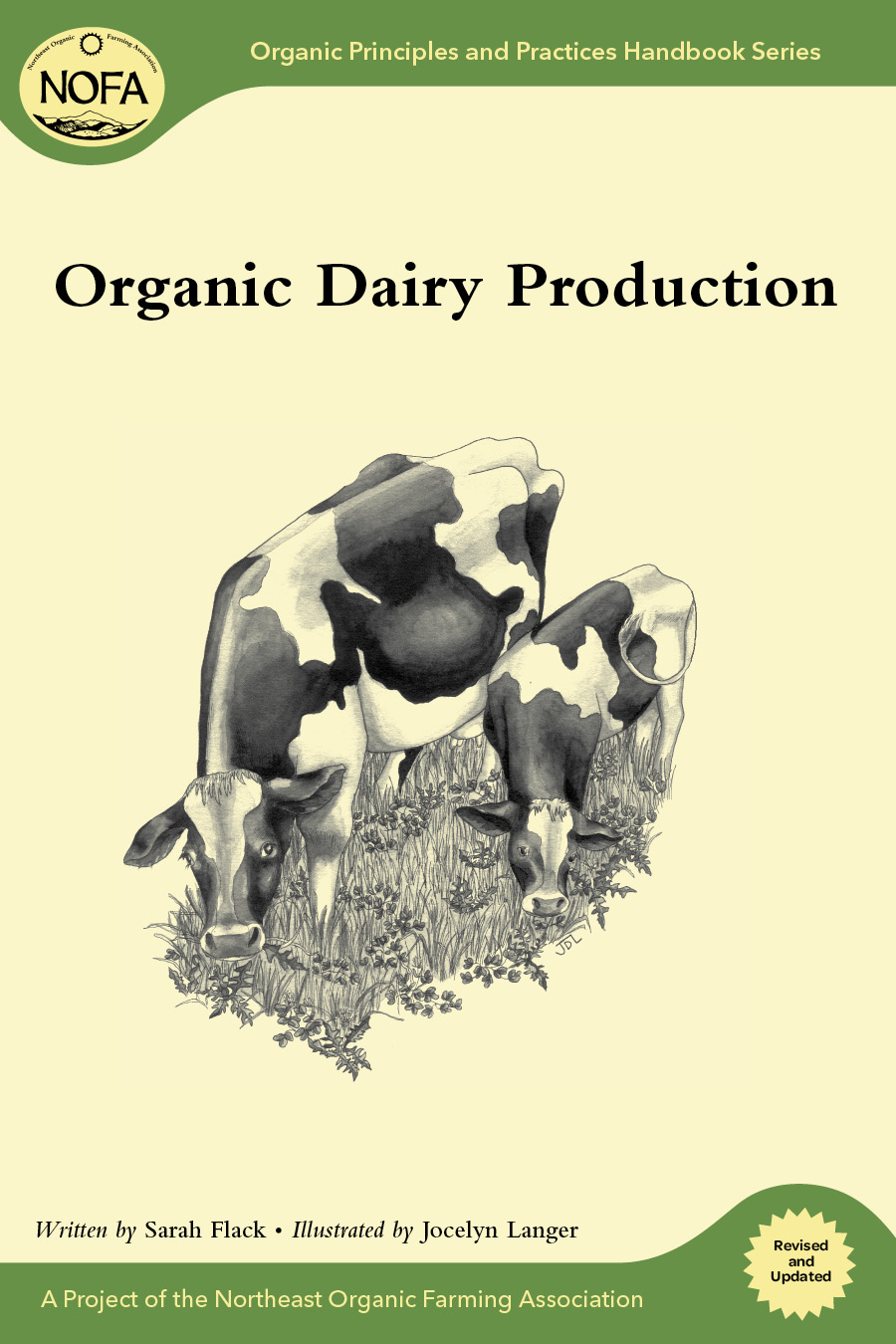
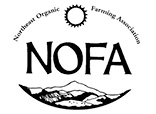
Organic Principles and Practices Handbook Series
A Project of the Northeast Organic Farming Association
Organic Dairy Production
Revised and Updated
Sarah Flack
Illustrated by Jocelyn Langer
Chelsea Green Publishing
White River Junction, Vermont
Copyright 2004, 2011 by the Northeast Organic Farming Association Interstate Council.
All rights reserved.
No part of this book may be transmitted or reproduced in any form by any means without permission in writing from the publisher.
Editorial Coordinator: Makenna Goodman
Project Manager: Bill Bokermann
Copy Editor: Cannon Labrie
Proofreader: Helen Walden
Indexer: Peggy Holloway
Designer: Peter Holm, Sterling Hill Productions
Printed in the United States of America
First Chelsea Green revised printing March, 2011
10 9 8 7 6 5 4 3 2 1 11 12 13 14
Our Commitment to Green Publishing
Chelsea Green sees publishing as a tool for cultural change and ecological stewardship. We strive to align our book manufacturing practices with our editorial mission and to reduce the impact of our business enterprise in the environment. We print our books and catalogs on chlorine-free recycled paper, using vegetable-based inks whenever possible. This book may cost slightly more because we use recycled paper, and we hope youll agree that its worth it. Chelsea Green is a member of the Green Press Initiative, a nonprofit coalition of publishers, manufacturers, and authors working to protect the worlds endangered forests and conserve natural resources. Organic Dairy Production was printed on Joy White, a 30-percent postconsumer recycled paper supplied by Thomson-Shore.
Library of Congress Cataloging-in-Publication Data
Flack, Sarah, 1969
Organic dairy production / Sarah Flack ; illustrated by Jocelyn Langer. -- Updated and rev.
p. cm. -- (Organic principles and practices handbook series)
Originally published in 2004 by the Northeast Organic Farming Association Interstate Council.
Includes index.
ISBN 978-1-60358-351-0
1. Organic dairy farming--United States. 2. Organic dairy farming--Case studies. I. Langer, Jocelyn. II. Title. III. Series: Organic principles and practices handbook series.
SF246.O74F63 2011
636.2142--dc22
2011003649
eISBN: 9781603583527
Chelsea Green Publishing Company
Post Office Box 428
White River Junction, VT 05001
(802) 295-6300
www.chelseagreen.com
Best Practices for Farmers and Gardeners
The NOFA handbook series is designed to give a comprehensive view of key farming practices from the organic perspective. The content is geared to serious farmers, gardeners, and homesteaders and those looking to make the transition to organic practices.
Many readers may have arrived at their own best methods to suit their situations of place and pocketbook. These handbooks may help practitioners review and reconsider their concepts and practices in light of holistic biological realities, classic works, and recent research.
Organic agriculture has deep roots and a complex paradigm that stands in bold contrast to the industrialized conventional agriculture that is dominant today. Its critical that organic farming get a fair hearing in the public arenaand that farmers have access not only to the real dirt on organic methods and practices but also to the concepts behind them.
About This Series
The Northeast Organic Farming Association (NOFA) is one of the oldest organic agriculture organizations in the country, dedicated to organic food production and a safer, healthier environment. NOFA has independent chapters in Connecticut, Massachusetts, New Hampshire, New Jersey, New York, Rhode Island, and Vermont.
This handbook series began with a gift to NOFA/Mass and continues under the NOFA Interstate Council with support from NOFA/Mass and a generous grant from Sustainable Agriculture Research and Education (SARE). The project has utilized the expertise of NOFA members and other organic farmers and educators in the Northeast as writers and reviewers. Help also came from the Pennsylvania Association for Sustainable Agriculture and from the Maine Organic Farmers and Gardeners Association.
Jocelyn Langer illustrated the series, and Jonathan von Ranson edited it and coordinated the project. The Manuals Project Committee included Bill Duesing, Steve Gilman, Elizabeth Henderson, Julie Rawson, and Jonathan von Ranson. The committee thanks SARE and the wonderful farmers and educators whose willing commitment it represents.
Thanks to Carl Reidel, Amy McMillon, Remi Gratton, Carol Dunsmore, Gwyneth Flack, Steve St. Onge, and Doug Flack for the editorial help. Special thanks also to Nat Bacon and Lisa McCrory, and to the many farmers and veterinarians who provided me with information and inspiration.
Contents
This handbook is an introduction to important issues in organic dairy production. It attempts to provide todays organic or transitioning dairy farmer with an overview of the tools and ideas available. It includes resources to assist farm management and ongoing farm improvement. Real-farm examples are included to show the variation and creativity in how different organic dairy farms are managed.
There is no simple recipe for setting up and managing a successful organic dairy farm; the uniqueness of people alone assures that there are as many ways to go as there are organic dairy farmers. The success of each depends on the way the farmer manages the available natural and human resources to meet the particular farm, family, and business goal.
Even knowing products, information, and resources is just a beginning. The ability to manage effectively requires technical knowledge, gained over time, of managing and caring for soils, livestock, and plants. It requires observational skills to notice subtle changes and adapt to them. The decision to go organic, a transition that takes several years, needs to be considered within the context of the farmers experience and predisposition, the overall goals for the farm, the family goals, the natural ecology of the land involved, and an understanding of the organic standards.
Before making the transition to organic dairy farming, ask yourself:
Do you have management skills in livestock health, soil fertility, high-quality forages, record keeping that meets organic standards, and maintaining high milk quality?
Do you have access to an organic milk market?
Do you have a clear understanding of the current organic standards?
Are there locally available and affordable sources of organic feed? Do you know where to source alternative health-care products and organically approved fertilizers?
Do you know the costs associated with transition and long-term organic production? The cost of the transition is a key consideration for a farm deciding if and when to convert to organic.
Do you know people in your area who are knowledgeable (veterinarians, agronomists, other farmers)?
Do you have a clear (and written) goal for your family and farm? (See the companion NOFA handbook Whole-Farm Planning by Elizabeth Henderson and Karl North.)
Several decades ago, the business of organic dairy farming had its beginnings with just a few farms. These farms were organic owing to personal commitment or because they had a locally developed market. Today the picture is quite different. Growing numbers of certified organic dairy farms are shipping fluid milk or making organic dairy products on their farms.

